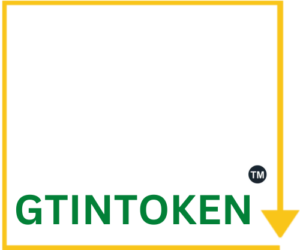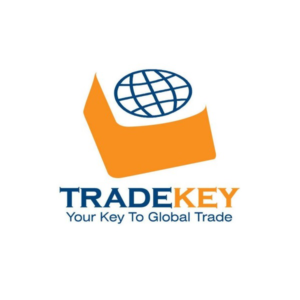Web-3 Protocol
By TradeDigitization.com
Protocol Helping a Transition To Web 3
Providing Web 3 Benefits To Web 2 Sites
Facilitating Web-3 For Trade
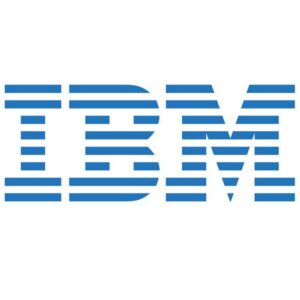 What is The Web-3 Protocol?
What is The Web-3 Protocol?
The Web-3 Protocol has been initiated by TradeDigitization.com, which is an IBM Partner Programme.
The Web-3 Protocol has been designed to help with a transition to Web 3.
TradeDigitization.com comprises of TRADE GATEWAYS and e-Debit. These, along with the GTIN Token, are components of the Web-3 Protocol, and are designed to assist with a transition to Web 3.
Web 2, the social web, brought us user-generated content, social media platforms, and interactive websites. However, Web 3 takes the Internet to a new level by introducing decentralized web platforms, blockchain technology, and advanced user experiences.
While being an exciting opportunity, the transition to Web 3 presents many challenges. For that reason, TradeDigitization.com has launched the Web-3 Protocol as a halfway house that assists the transition to, and the adoption of, Web 3.

Web 3 Features provided by the Web-3 Protocol
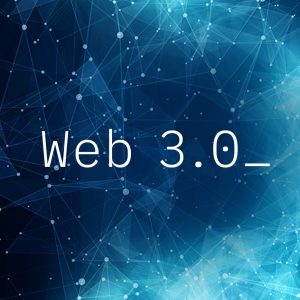
Benefits of Web 3
Web 3, also known as the "Internet of Value", is seen as the next stage in the evolution of the World Wide Web. It is characterised by a focus on decentralisation and transparency.
One of the key technologies driving Web 3 is blockchain, which is a decentralised and transparent ledger that enables secure and trustworthy transactions without the need for intermediaries.
Web 3 is also expected to incorporate greater use of artificial intelligence and machine learning.
Potential drawbacks of Web 3
While Web 3 may have the potential to provide more control, security, and efficiency for users, it also raises new and novel concerns around technical knowledge
The use of blockchain technology is still relatively new and complex, and can be confusing for novice users to navigate.
Slow integration of web 3 functionality in modern web browsers. Browsers just started introducing web 3 functionalities like crypto wallets. For now, Web 3 is less accessible for mass audiences. And apart from digital wallets and NFT collections, there are not many Web 3 apps or websites around the web yet
There are also scalability issues. The current limitations of blockchain networks can have significant implications for Web 3 content creation and distribution.
Many public blockchains, have struggled to keep up with the increasing demand for their services, often resulting in network congestion, high transaction fees, and slow processing times.
For content creators, these technical limitations can translate into practical hurdles. Slow transaction times, for example, can hamper real-time interactivity and responsiveness.
High gas fees may also price out certain segments. Furthermore, for many people, the concepts and terminology associated with blockchain, cryptocurrencies, and decentralized applications are quite daunting.
The complex technical underpinnings of Web 3, from private keys and digital wallets to gas fees and smart contracts, can create a significant barrier to entry for both creators and their audiences.
Helping Overcome Challenges for Web 3 Developers
The Web-3 Protocol also features Web 3 Gateways to help overcome challenges for Web 3 Developers and thereby assist the transition to Web 3.
Access to a Web 3 Gateway offers access to a comprehensive environment to write, test, and debug smart contracts. This is crucial for developers who want to create complex smart contracts that are error-free and optimized for the blockchain network.
Smart contracts are self-executing agreements with the terms directly written in code, defining the relationship between parties involved.
The Web 3 Gateways also help to designing a front end interface, and implement testing and deployment strategies. The Web 3 Gateways also enable the creation of decentralized applications (dApps) that are devoid of a single point of failure.
Quotes From Partners in the Parent TradeDigitization.com Programme
"Exciting Opportunity"
From TradeKey - The World's Largest B2B Marketplace
"We are looking forward to building a thriving partnership!"
From IBM - Global Leader in Blockchain , the cornerstone of Trade Digitization
How The Web-3 Protocol helps address the lack of user-friendliness and accessibility of Web 3
Web 3 is an evolution of the web, not a revolution, so it allows use of the Web-3 Protocol to build on a familiar Web 2 infrastructure to provide the benefits of Web 3 and help with the transition to Web 3.
The lack of user-friendliness and accessibility detailed poses a significant challenge for Web 3 adoption.
If the target audience can’t navigate the intricacies of Web 3, it can limit the reach and impact of Web 3, undermining the very benefits that Web 3 promises to deliver.

Some Required Features for the transaction from Web 2 to Web 3 are detailed below.
Digitization
The Digitization process converts the representation of an object, image, sound, document, or signal information into a digital format.
This then allows for the transmission of that value directly across the web and enables immediate ownership across the web.
This is particularly important in cross border trade, which has remained basically the same for over 200 years. Digitization can help remove the long transaction times that are a current part of the current paper-based system by up to 98%.
TradeDigitization.com uses Digitization to help make trade faster, more secure, and more efficient.
Decentralized Web Platforms
Decentralized web platforms play a crucial role in Web 3. Unlike traditional centralized platforms, they are built on blockchain technology and prioritize user control, privacy, and security.
These platforms allow users to interact directly with each other, eliminating the need for intermediaries.
Blockchain Technology
Blockchain technology is the backbone of Web 3. It enables decentralized and secure transactions, and provides greater transparency.
By leveraging blockchain, users can control their data and digital assets.
Blockchain also enables the development of decentralized applications (dApps) that operate outside the control of centralized authorities.
User-Generated Content
One of the defining characteristics of Web 3 is the emphasis on user-generated content. Users have the power to create, curate, and share content without heavy reliance on centralized platforms.
By embracing user-generated content, users can contribute to the growth and evolution of the new internet era.
The transition from Web 2 to Web 3 represents an evolution in how we interact with the Internet, shifting from centralized platforms to a more decentralized, user-centric Web, that facilitates a transfer of value.
Differences between Web 2 and Web 3
Web 3, the next generation of the internet, brings many potential advantages and challenges.
As users transition from Web 2 to Web 3, some potential advantages include:
Customized Search Experiences
Web 3 also promises customized search experiences. By leveraging the power of user-generated content and artificial intelligence, the new internet era allows for highly tailored and relevant search results.
Users can expect to receive search content specific to their interests, preferences, and needs.
This level of personalization enhances the overall user experience and makes online interactions more meaningful and efficient.
Advanced Virtual Reality Experience
Web 3 also provides potential for the advancement of the virtual reality experience.
As the global market of web applications expands, Web 3 offers the potential for immersive and realistic virtual environments.
From gaming to education to healthcare, the ability of web users to engage with virtual reality opens up a wide variety of practicable use cases. This can include helping users dive into enjoyable journeys without physical constraints.
How The Web-3 Protocol can help address the lack of user-friendliness and accessibility of Web 3
The lack of user-friendliness and accessibility detailed poses a significant challenge for Web 3 adoption
Web-3 is an evolution of the web, not a revolution, so it allows the use of the Web-3 Protocols to build on a familiar Web 2 infrastructure to help with the transition to Web 3.
Web-3 Protocol Components
Web-3 Protocol Components provide necessary tools to assist in a transition to Web-3.
TRADE GATEWAYS
TRADE GATEWAYS comprises of over 300 Digital Trade Gateways across the globe. Web 3 has great potential for Trade. There is a co-operation on TRADE GATEWAYS with TradeKey, the largest B2B Marketplace in the world.
The parties utilizing TRADE GATEWAYS for a transaction, agree an equivalence between control of an electronic transferable record and possession of a transferable paper document or instrument.
The reaching of such an agreement within a closed Trading Group, validates the use of an electronic transferable record, thereby helping the transition to Web 3, and pave the way for MLETR, which is an incoming legal framework for web 3 that has been adopted by the United Nations Commission on International Trade Law (UNCITRAL)

GTIN Token - Part of the TradeDigitization .com Programme
The GTIN Token Programme is operated by TradeDigitization.com. The GTIN Token Trademark is owned by TradeDigitization.com.
GTIN is the number that can be seen on the familiar barcode. GTIN is the acronym for “Global Trade Item Number”.
A GTIN is a number that is used to identify “something” that can be purchased, sold, or put into inventory.
This includes individual items that can be purchased by a consumer as well as cases of items that could be purchased and moved within a supply chain.
A GTIN is an umbrella term used to refer to items that may need to be identified with a GTIN barcode.
The GTIN Token Programme builds on the GTIN System on which the Bar Code is built, to give products their own Unique Digital Identity for Trade Digitization.
This is the world's first-ever implementation of GTIN semantics in a Trade Digitization framework.
This development enables all brands already working with GTIN identifiers to seamlessly apply a Trade Digitization Programme.

e-Debit - Helping in Transitioning from Web 2 to Web 3
e-Debit plays a pivotal role in transitioning users and businesses from Web 2 to Web 3 by offering an integrated platform that merges the best of centralized and decentralized worlds. Here's how e-Debit facilitates this transition:
Providing Memorable Wallet Addresses: e-Debit provides memorable wallet addresses. Wallet addresses can be very long and complex. Having memorable and relevant wallet addresses can help simplify a transition to Web 3.
User-Friendly Interface: e-Debit lowers the entry barrier to the crypto world with an interface that is easy to navigate for beginners and experienced users. This is crucial for transitioning users unfamiliar with blockchain and cryptocurrency concepts.
Centralized and Decentralized Functions: e-Debit addresses trust and convenience issues by combining centralized and decentralized features.
Inclusive Crypto Tools: e-Debit facilitates accessing a one-stop shop for various crypto needs, that are provided for by major partners, thereby facilitating users to hold, buy, exchange, and managing their crypto assets. This eliminates the need for multiple platforms, simplifying the user experience.
Community Engagement and Management: This is instrumental in encouraging more Web 2 users to explore and transition to Web 3. As the TradeDigitization.com Overall programme has over 3 million subscribers, there is good scope for community engagement on the Web-3 Protocol.
Support for Decentralized Applications (DApps): e-Debit's support for DApps connects users directly with the decentralized internet, enabling them to interact with smart contracts and participate in the DeFi space without intermediaries.
Education and Awareness: Through its user-friendly platform and resources, e-Debit educates its users about the benefits and workings of the blockchain and cryptocurrency, encouraging a deeper understanding and adoption of Web 3 technologies.
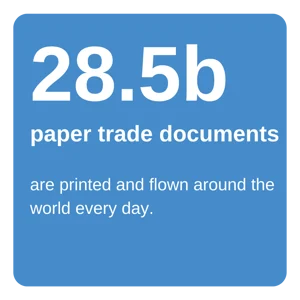
E:mail: contact@tradegateways.com

